Iranian Activist Alinejad In TIME's Women Of The Year List
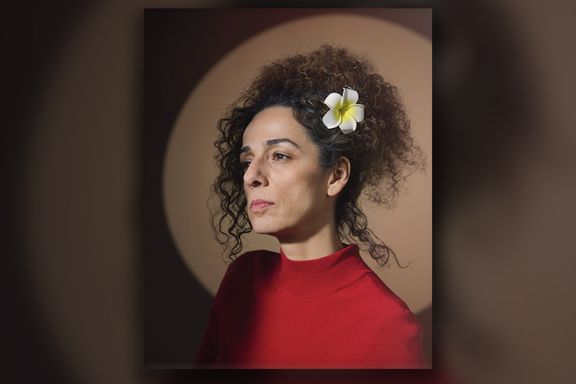
Iranian activist Masih Alinejad, the target of terror plots by regime intelligence, has been nominated for the prestigious TIME magazine Women of the Year list.

Iranian activist Masih Alinejad, the target of terror plots by regime intelligence, has been nominated for the prestigious TIME magazine Women of the Year list.
Journalist Alinejad, now a face of the revolution, has lived in exile in the US since 2009 after exposing corruption in Iran. Seen as a profound threat to the regime led by Ayatollah Khamenei, Alinejad said: “Women of Iran are his [Khameini’s] biggest enemy.”
She has refused to stay silent in spite of repeated threats to her life, which resulted in the indictment of four men by the US in 2021, planning to kidnap the vocal activist. She has helped bring the revolution to the global stage during five months of unrest triggered by the death in custody of Mahsa Amini, arrested for the inappropriate use of her hijab.
Alinejad is one of 12 women globally who made the list, which highlights leaders who are using their voices to fight for equality. They come from a range of backgrounds from activism and government to sports and the arts.
They include Anielle Franco who turned to politics after her sister Marielle, a city councilor in Rio de Janeiro who campaigned against police violence and corruption, was assassinated in 2018. Now, as Minister for Racial Equality in Brazil’s new government, she is channeling her grief into action.
Others include Ukrainian LGBTQI activist Olena Shevchenko, Pakistan's Ayisha Siddiqa, who after witnessing the devastating effects of climate change on her community was inspired to speak up, delivering a powerful speech at November’s UN Climate Conference in Egypt on the urgency of climate justice.
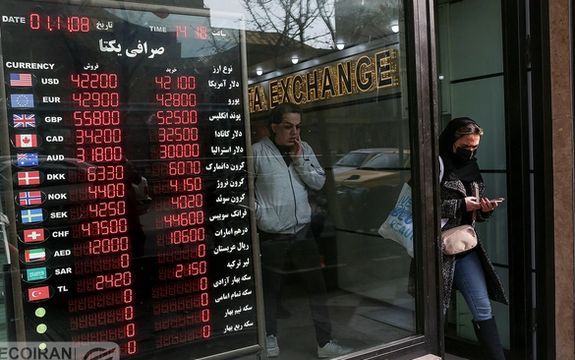
Iran’s national currency has bounced back in the past three days, regaining about 10 percent of its lost value since a historic low four days ago, leaving pundits wondering about the reason.
The exchange rate of the dollar touched over 600,000 rials earlier on Sunday but the Iranian currency began to rise to close at about 540,000 against the dollar on Thursday, which is the last weekday in Iran.
Despite the rebound, the rial is still down 100 percent compared to six months ago.
Iranian media is replete with different scenarios for the rebound, but the most plausible explanation still seems to have been the injection of a large amount of foreign currency into the market by the Central Bank of Iran.
Another reason mentioned in Tehran media is a bit far-fetched guesswork that the country's foreign minister's trip to Geneva during the week and the possibility of resuming negotiations to revive the 2015 nuclear deal injected some optimist into the market.
In an article earlier in the week, Jomhouri-e Eslami newspaper argued that fluctuations in the market are out of the hands of the government as the country’s economy is tied to the fate of Iran’s nuclear deal and its relations with the other countries. The paper and other media outlets speculated that foreign minister Hossein Amir-Abdollahian’s trip to attend a United Nations human rights meeting might also re-open the door to nuclear talks resulting in the lifting of US sanctions.
The paper described the extreme rise and fall of the dollar in only a few days as a lesson for the authorities, highlighting that the country can survive the current critical period through reviving the JCPOA and declaration of neutrality in the Russian invasion of Ukraine as well as a practical approach to a balanced policy in international relations.
Reports about the imminent visit by the head of the International Atomic Energy Agency (IAEA) Rafael Grossi to Iran for high-level meetings, purportedly slated for Friday, was another reason mentioned by the country’s media. The visit comes amid discussions with Tehran on the origin of uranium particles enriched to up to 83.7% purity, very close to weapons grade, at its Fordow enrichment plant.
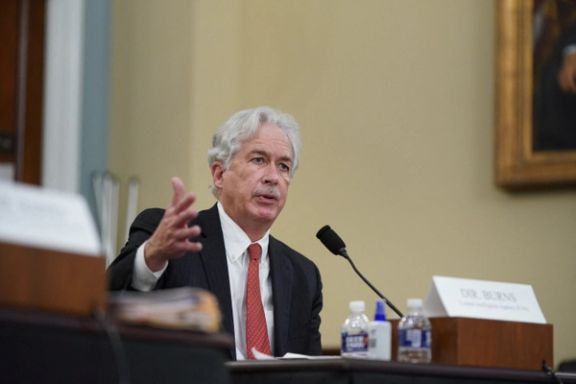
Remarks by CIA Director William Burns about Islamic Republic not pursuing an atomic bomb was also mentioned as being behind the halt in the devaluation of the rial. "We don't believe that the Supreme Leader in Iran has yet made a decision to resume the weaponization program that we judge that they suspended or stopped at the end of 2003," Burns said.
While merchants told Iran International earlier in the week that trading in Tehran markets had largely come to a halt as the rial was near its all-time low, the local media confirmed reports that the Central Bank of Iran intervened in the currency market to stop the freefall of the rial. On Sunday, the bank injected $700 million in UAE dirhams and the rial began to rise from its all-time low of 600,000 against dollar.
The rial’s plunge to 575,000 Saturday, February 25, exacerbated chaos in several of Iran's major markets and brought many businesses to near standstill. The rial fell from 35,000 to more than 600,000 against the US dollar in exactly five years. This led to very high inflation, officially at more than 50 percent, which has impoverished tens of millions of Iranians. An Iranian economist says the role of US sanctions in causing economic chaos in Iran has been significant.
All in all, the Islamic Republic seems incapable of major changes in the market as it is strapped for cash with some reports saying the government does not allow ATM machines to give cash more than the current limit of 2,000,000 rials – about $4, which barely can buy a hamburger today in the capital.
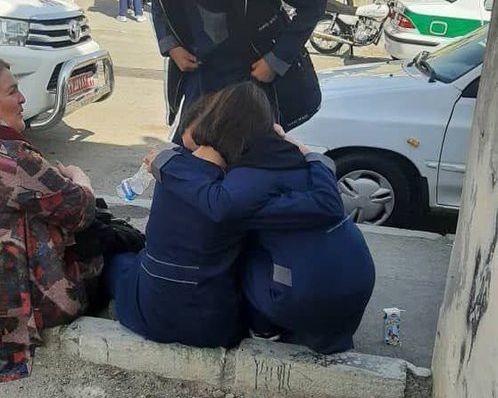
A teachers’ union in Iran has urged members to stage a protest Tuesday to condemn school gas attacks while another group has demanded an explanation from the Supreme Leader.
At least 58 schools in one-third of the country’s provinces have been attacked by unidentified gases since November 30 when the first case of poisoning among schoolgirls was reported in the religious city of Qom. Around 1,000 students have become ill with the mysteriously dispersed, unidentified fumes so far.
Qom, capital of a central province of the same name with 30 schools, Ardabil, capital of the northwestern Ardabil province with 9, and the capital Tehran with 8 schools lead the list of the most targeted cities.
The Coordination Council of Iranian Teachers' Trade Associations on Wednesday released a statement and urged teachers and the people of Iran to stage rallies on March 7 outside the parliament in Tehran and in front of the education department headquarters in other cities to demand urgent resolution of school attacks as well as teacher’s own problems including a wage increase for the next year that takes the factor of inflation into account.
Iranian Teachers' Trade Association, a national teachers’ union, in a statement Wednesday criticized the government for three months of denials of the attacks on girls’ schools.
“There is strong suspicion that the purpose of the attacks is quashing the Woman, Life, Freedom movement by instilling fear among girls and their families,” the statement said while demanding Supreme Leader Ali Khamenei and other top religious figures to condemn the attacks expressly and decisively.
Iranian Teachers' Trade Association called the attacks “bioterrorism” and said expecting concrete action against perpetrators appears unrealistic given the authorities’ failure to offer concrete explanations about similar incidents, such as a spate of acid attacks in Esfahan in 2014 against women whose hijab was not deemed appropriate. Authorities never pursued religious fundamentalists who were suspected in the acid attacks.
In the past few years, the union whose members are highly critical of the regime has organized several nationwide teachers’ protests and strikes against low wages and for recognition of equal rights with other civil servants. Members, including some of the union’s leaders such as Rasoul Bodaghi, are often subjected to harassment, prosecution and imprisonment for their union activities.
Iranian Teachers’ House, another teachers’ association, in a statement Wednesday also demanded Khamenei to be accountable for the attacks that it called “state-sponsored terrorism and said “the theory that the state is behind the terror [attacks]” would be more plausible if he did not publicly address the issue.
“Targeting girls’ schools is a malicious act against the progressive Woman, Life, Freedom slogan [of protesters]. Obviously, the leader and the security and military bodies under his command will be responsible for any incidents [that happen],” the statement said.
Iranian Teacher’s Islamic Association, Iran Teachers’ Association, and Teacher’s Society of the Islamic Iran also wrote a joint letter to Interior Minister Ahmad Vahid who was tasked with probing the incidents of poisoning in schools by President Ebrahim Raisi on Wednesday. The three groups also requested a permit to stage a rally outside the ministry in Tehran on Wednesday.
Opposition parties and groups often complain their requests for rally permits are always ignored by the ministry.
In an Instagram post Thursday, the office of Unicef in Tehran said schoolgirls’ poisoning could negatively impact the high education coverage among children, especially girls, achieved over the past decades and offered to provide any needed support.
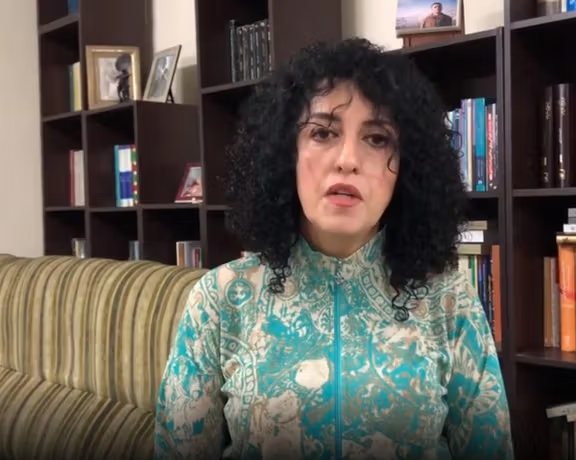
In response to Iran's foreign minister’s denials of rape in prisons, an imprisoned female activist announced she is ready to testify against the government.
In a letter sent to Radio Farda, the Persian Service of Radio Free Europe in Prague, Narges Mohammadi wrote: "In the past few months, detainees have been brought to the women's ward of Evin prison, and … subjected to sexual assault and physical torture. We have witnessed the traces left on their bodies.”
The civil activist, who has been in prison since 2016, also referred to the case of the elderly Baha'i poet and writer, Mahvash Shahriari, who has served 10 years in prison, and was recently arrested without any legal documents against her.
“She spent five months in solitary confinement [and] has suffered mental and physical torture,” emphasized Mohammadi.
She further expressed readiness "to testify in any place" as a "witness" regarding sexual assault and physical torture in prisons.
Amid the mass arrest of protesters within the past five months, numerous reports have been published regarding rape and assault on both men and women by regime officials in prisons, the first report published by CNN in November.
In response to the investigation, the foreign minister, Hossein Amir-Abdollahian, described the reports as "biased and false".
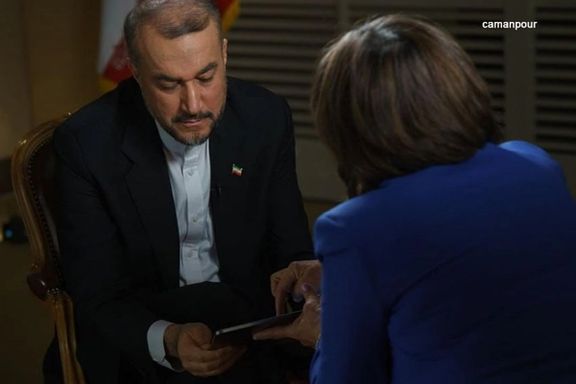
Iran's foreign minister claims that "women in the country have all the necessary freedoms" and that the police "did not kill anyone with a bullet” during the recent protests.
Hossein Amir-Abdollahian made the remarks in a challenging interview with CNN’s Christiane Amanpour, herself of Iranian origin, on Wednesday.
Amanpour conducted the interview without a hijab, in support of Mahsa Amini who died in custody after being arrested for the inappropriate wearing of her hijab. The event sparked mass protests since September, characterized by the slogan, 'woman, life, freedom' as women call for equal rights under the Islamic regime.
More than 500 civilians have since been killed in clashes with security forces with thousands more arrested.
Amanpour raised the issue of the alleged rapes of male and female prisoners at the IRGC detention center, which CNN had verified through its sources. Amir-Abdollahian claimed the reports were "biased and incorrect", stating that he cannot confirm the issue and that there are many such "baseless" claims.
The foreign minister's denial comes as videos of police officers assaulting protesting women in the streets continue to be widely published on social media.
“Women in Iran have all the necessary required freedoms within the framework of the law,” he claimed, calling CNN’s interview was “a confrontation”.
He said: “This is not the way to conduct an interview.”
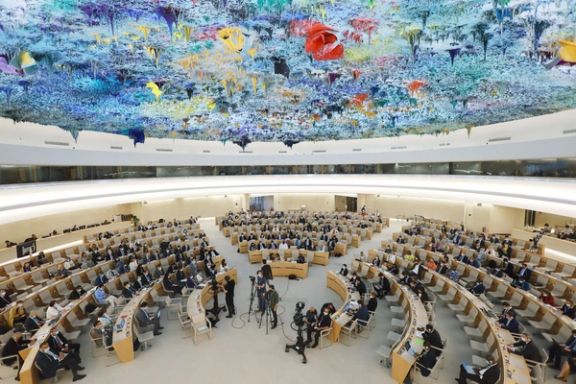
A UN fact-finding mission has called on individuals, groups and organizations to submit information and documentation on the Islamic Republic’s rights violations during ongoing protests.
The mandate was adopted in Resolution S35/1 on the deteriorating situation of human rights in Iran, especially with respect to women and children as well as minorities, in relation to the protests that began in September 2022 after the death in custody of Mahsa Amini.
On November 24, the Human Rights Council decided to establish an independent international fact-finding mission on Iran's deadly repression of protests, which has killed over 500 civilians, until the end of the fifty-fifth session of the Council taking place in March 2024.
The UN mission, in particular, asked for information concerning violent crackdown on peaceful protests by security forces, including alleged arbitrary arrests and detentions, sexual and gender-based violence, excessive use of force, torture and other inhumane treatment and enforced disappearances, as well as the deaths of hundreds of peaceful protesters and thousands of arrests.
The mission is also seeking documentation on physical, psychological and sexual abuse of women and girls for exercising their human rights and fundamental freedoms, and children’s rights violations in relation to the protests, including in raids on schools, and the incarceration of children in ‘psychological centers.'
The call also asked for information on violations of civil society and human rights activists, and reports of charges that carry the death penalty being applied to protesters for offences that are less than the most serious crimes as well as “restrictions on communications affecting landline and mobile telephone usage, including Internet shutdowns and the blocking of social media platforms”.
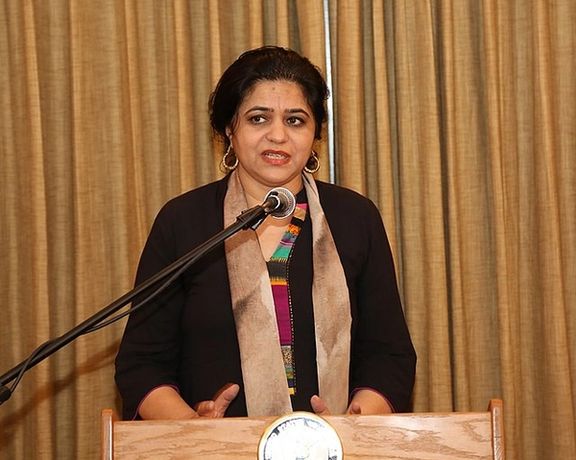
According to the statement issued by the UN Human Rights Council, submissions should be sent as soon as possible, but no later than December 31, 2023, to enable the mission’s Secretariat to process the information, including any follow-up if necessary. Information and documentation can be submitted in English or Persian.
The global outcry against the Islamic Republic’s crackdown on dissent, manifested through a wide array of human rights violations, is getting louder as the opposition forces are uniting and the world seems to be acknowledging the popular uprising. The deteriorating state of human rights in Iran, particularly unlawful executions and chemical attacks on schoolgirls, on the backdrop of worsening economic conditions, workers’ strikes, and devaluation of national currency rial has led to new moves by the international community.
In addition to Europe mulling over designating the Revolutionary Guards – IRGC – as a terrorist organization, US lawmakers are pushing for additional sanctions on Islamic Republic’s parliament. Packed with hardliners, the body provides the legal framework for Tehran’s security forces to murder, torture, and imprison dissidents, US lawmakers say as a bipartisan coalition is pressuring the Biden administration to sanction nearly all of its members amid the government’s crackdown on anti-regime protesters.
Pushing for sanctions on 227 out of 290 members of Iran’s parliament, a group of 26 US representatives and senators from both parties said that "the Islamic Republic of Iran lacks democratic legitimacy, and the members of its parliament are not true democratic representatives of the Iranian people."

Led by Representative Claudia Tenney (R, NY) and Senator Marco Rubio (R, Fla), the group sent a letter to the State and Treasury Departments. "We urge you to take further actions—and encourage international partners to join us -- to impose much clearer costs on the Iranian regime for the execution of protesters."
On Wednesday, State Department spokesperson Ned Price expressed Washington’s unequivocal determination to hold the Islamic Republic authorities accountable for their actions, saying “we are using every authority we have at our disposal to pursue those who are responsible for the atrocious human rights abuses that the Iranian regime has perpetrated against its own people since September of last year.”